With the rapid development of the terminal industry, there is an increasing demand in the market for high-performance, flexible, and programmable solutions. As an innovator in the FPGA field, E-Link’s latest product, the 16nm Titanium series new member—TJ375, has completed nearly three months of verification and testing work and is ready to be launched into the market. The launch of this product aligns perfectly with the current market demand trends, and we look forward to bringing innovation and breakthroughs to various fields.
The TJ375 FPGA is based on a 16nm standard process, optimizing the trade-offs among power consumption, performance, integration, and flexibility, exhibiting excellent performance.
It provides 370K logic units, as well as rich DSP and BRAM resources.
Supports 16 channels of 16G SerDes interfaces and two sets of PCIE Gen4x4 for high-speed interface communication.
Embedded with a quad-core hard RISC-V processor, it facilitates users in network protocol processing and system operations such as Linux/FreeRTOS.
Supports multiple sets of 2.5G MIPI DPHY hard cores for quick video data transmission and reception.
Supports 2x32bit LPDDR4/4x hard core interfaces, with a rate of up to 3.7Gbps, providing high storage bandwidth and ease of use advantages.
Low-power characteristics:
· Quad-core RISC-V@1GHz: ~400mw
· PCIE Gen4x4: 0.75w@25°C
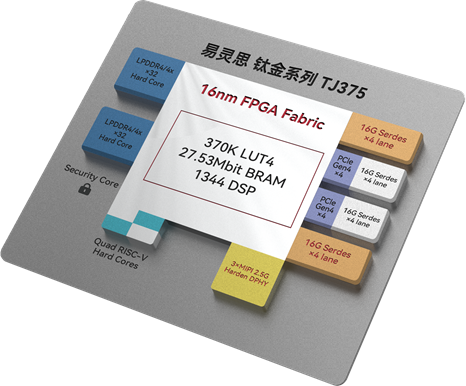
Leveraging the open-source VexRISC-V, E-Link has independently optimized its core architecture and implemented a quad-core processor embedded within the TJ375, eliminating risks associated with intellectual property and licensing terms, allowing customers to use it with confidence. Currently, based on the TJ375N529 development board, it is capable of supporting Bare Metal/FreeRTOS/Linux system setups.
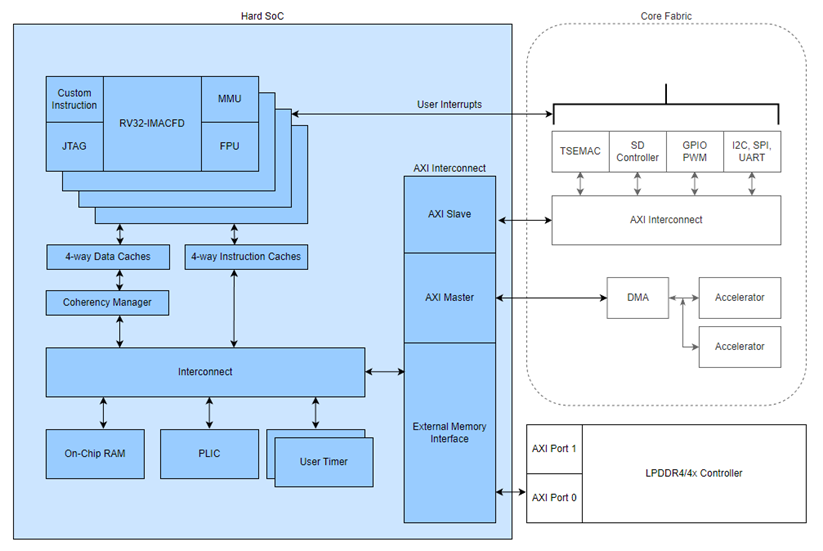
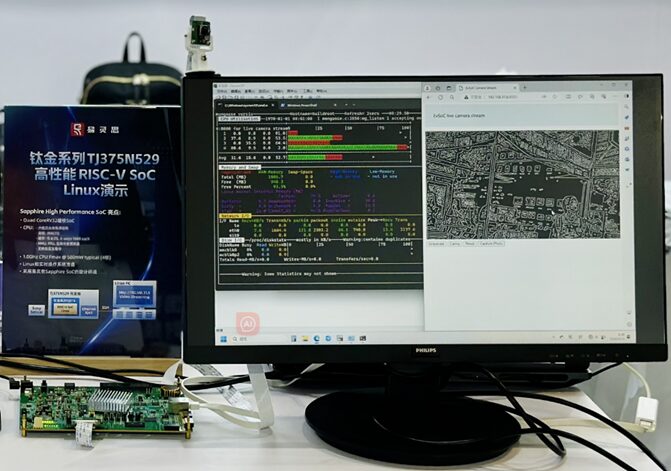
In terms of software support, E-Link has released the latest version 2024.1, which supports full-process development under RISC-V + FPGA SoC mode and provides quick IP setup capabilities, helping users to conveniently build RISC-V interface peripherals, bus setups, and custom instruction development.
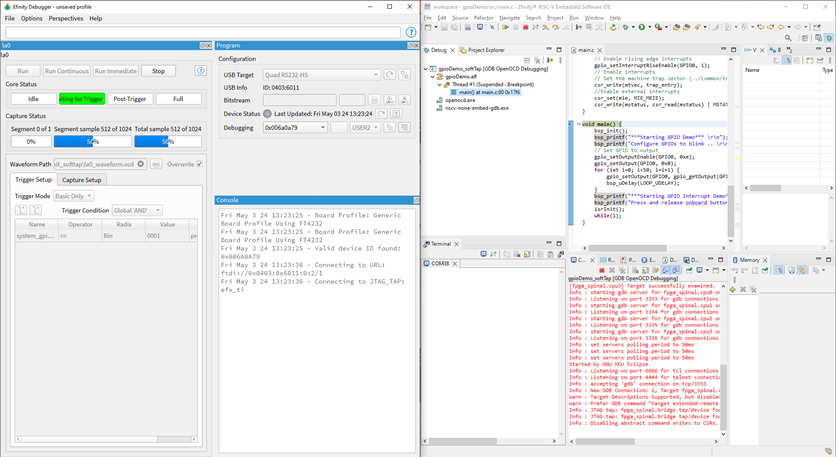
RISC-V Development Tools +Debugger Illustration
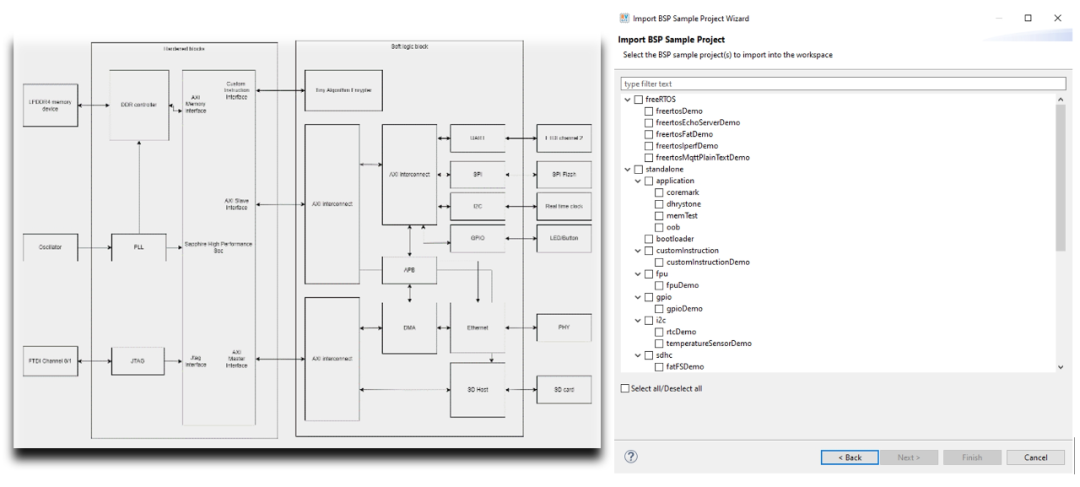
The TJ375 supports 16 pairs of 16Gbps SerDes interfaces and two sets of PCIE Gen4x4 protocol interfaces, providing ample support for high-bandwidth communication. Basic features include:
For 4x Quad structure, each Quad contains 4 pairs of SerDes paths, with a rate range covering from 1.25G to 16G.
Each Quad supports two sets of independent reference clocks, enabling communication requirements of different rates/protocols within the same Quad.
Supports PRBS and Loopback.
Dynamic configuration can be supported through the APB interface.
Provides Transceiver Debugger Tool Eye Diagram Tool.
Progress on the hardware level is promising! Currently, based on two TJ375N1156X EA test boards, loopback testing on PCIE Gen4 has shown good eye diagram results.
On the software side, we are making steady progress. After releasing initial support for the eye diagram tool for PCIE Gen4, we will continue to improve functionality and provide eye diagram testing capabilities for more IP protocols.
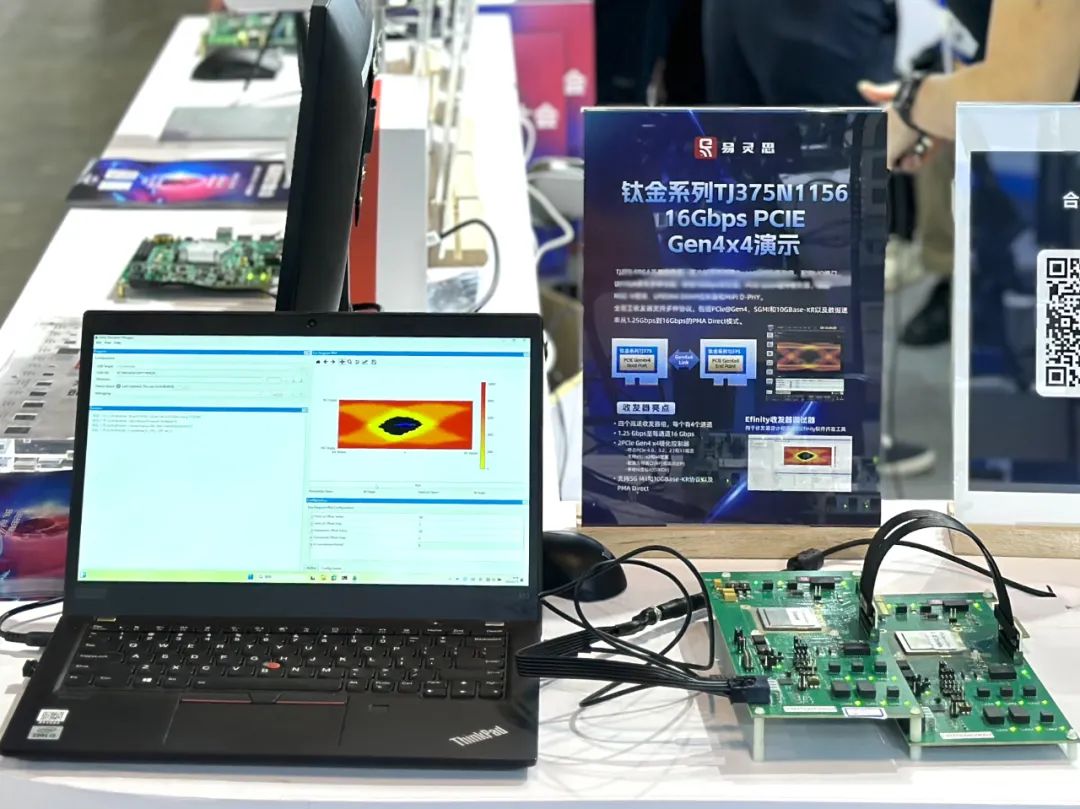
The TJ375N529 development board is now available for sale, allowing users to:
Quickly verify the quad-core hard RISC-V processor, with performance up to 1GHz.
Verify custom instruction designs.
Provide hard LPDDR4x controller: 100Gbps+ external storage bandwidth.
RISC-V Embedded Software IDE, Debugger, Driver, and Embedded software support for Bare Metal, FreeRTOS, and Linux system setups.
Provide TinyML AI Inference platform support.
Support Triple Speed Ethernet, SD Card, Real Time Clock.
Provide FMC, QSE, PMOD connectors to support other peripherals (SerDes interfaces not yet supported).
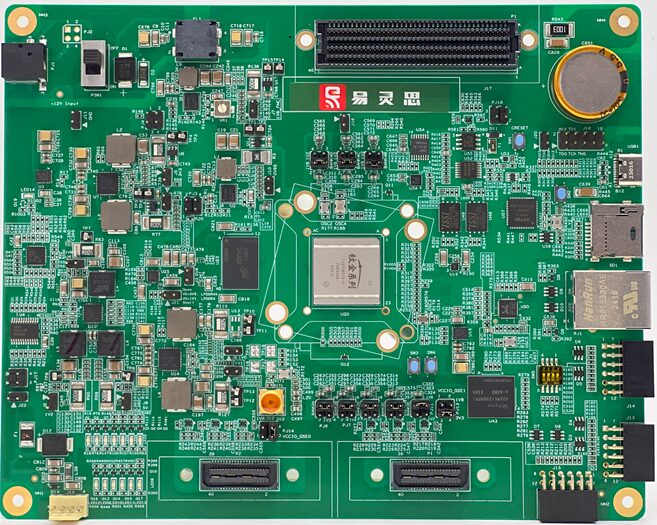
Expected to be released in mid-August 2024, the TJ375N1156X development board will support SerDes high-speed interface verification, stay tuned!
E-Link’s 16nm TJ375 FPGA has completed verification of all major functional modules. We welcome inquiries and guidance from customers across various industries. We also hope to establish a win-win ecological cooperation with industry partners, including high-speed IP and RISC-V development.
E-Link is committed to innovating low-power, high-performance FPGA products, taking pride in quickly bringing products to market and serving customers, striving to co-create the domestic semiconductor ecosystem.

E-Link is a domestic FPGA company headquartered in Shenzhen Qianhai. The company leverages its independently controllable Quantum® hardware architecture, using interchangeable logic and routing XLR structures to achieve innovative product designs and software algorithms, enabling FPGA products to possess advantages such as low power consumption, small size, high density, and high performance. The mass-produced 40nm Trion series and 16nm Titanium series FPGA products are widely used in terminal fields such as machine vision, display, industrial control, medical, automotive, AI, and communication.

The Titanium series FPGA features an enhanced Quantum® architecture, 16nm process, 35K to 1,000K logic units, ultra-high performance of 300-500MHz, and a minimum package size of 3.5mm*3.4mm@60K LE, with power consumption as low as 1/4 that of competitors, rich hard core resources, and the latest product TJ375 is now mass-produced.
Previous Issues
Articles